The 50 States Project is a yearlong series of candid conversations with interior designers across the country about how they’ve built their businesses. This week, Charleston, South Carolina–based preservationist turned designer Olivia T.M. Brock of Torrance Mitchell Designs tells us how the city’s design vernacular is broadening amid an influx of design talent, the way her work in historic preservation shapes her approach, and how endless access to design ideas has made client management so much more complicated.
Did you always know you wanted to be a designer?
It was actually the opposite! My mother was a decorator, her twin sister was a decorator, and my grandmother moonlighted as a decorator, so I always said I was never going to be a decorator, because I have a rebellious nature. But I did grow up having an appreciation for historic houses and buildings, and history in general.
You’re in Charleston now. Did you grow up there?
No, I was born in New York, and then we lived in Los Angeles, and then I grew up primarily in Darien, Connecticut. My mother’s from Locust Valley on Long Island, which is also where my grandparents were, and that’s another place with really pretty old houses. I was definitely surrounded by historic architecture from a young age, and I majored in history at Boston College. After I graduated, I came down to Charleston to work at a nonprofit—a historic house museum called Drayton Hall. I was here for about six months as an unpaid intern right out of college before I got a job back in New York with an organization called the Historic House Trust of New York City, which is a public-private partner with the New York City Department of Parks and Recreation that manages the relationships with 23 nonprofit organizations that run historic house sites that actually sit on public land.
That’s fascinating.
It was! I worked there for about a year and a half while I applied to graduate school, and then I went to the University of Pennsylvania. I have a Master of Science in historic preservation and a certificate in real estate development from Wharton. I thought I was going to be a preservation-minded real estate developer who specialized in the adaptive reuse of historic structures.
You wrote your thesis about revolving loan funds, right?
I did—I researched short-term, low-interest loans for the rehabilitation of historic property. After graduate school, I got my dream job working for Goldman Properties in New York. They’re the organization that founded the Wynwood Walls in Miami, and they specialized in creating cool neighborhoods by revitalizing historic buildings in places like [New York’s] SoHo, [Miami Beach’s] South Beach, and Center City, Philadelphia. The company owns a bunch of apartment buildings, and I ended up really focusing on rehabbing some apartments in cast iron buildings in SoHo, where I was doing a lot of finish-related things to the interiors more than work that was preservation-focused.
On June 25, Mason Lane Art Advisory founder Katharine Earnhardt—who works on projects across North America and the United Kingdom—shares her expertise on sourcing and selling art. Click here to learn more and remember, workshops are free for BOH Insiders
We want to hear your thoughts! Take BOH’s annual reader survey, an 8-minute questionnaire that helps us get to know you better and will allow us to tailor our storytelling to your business needs.
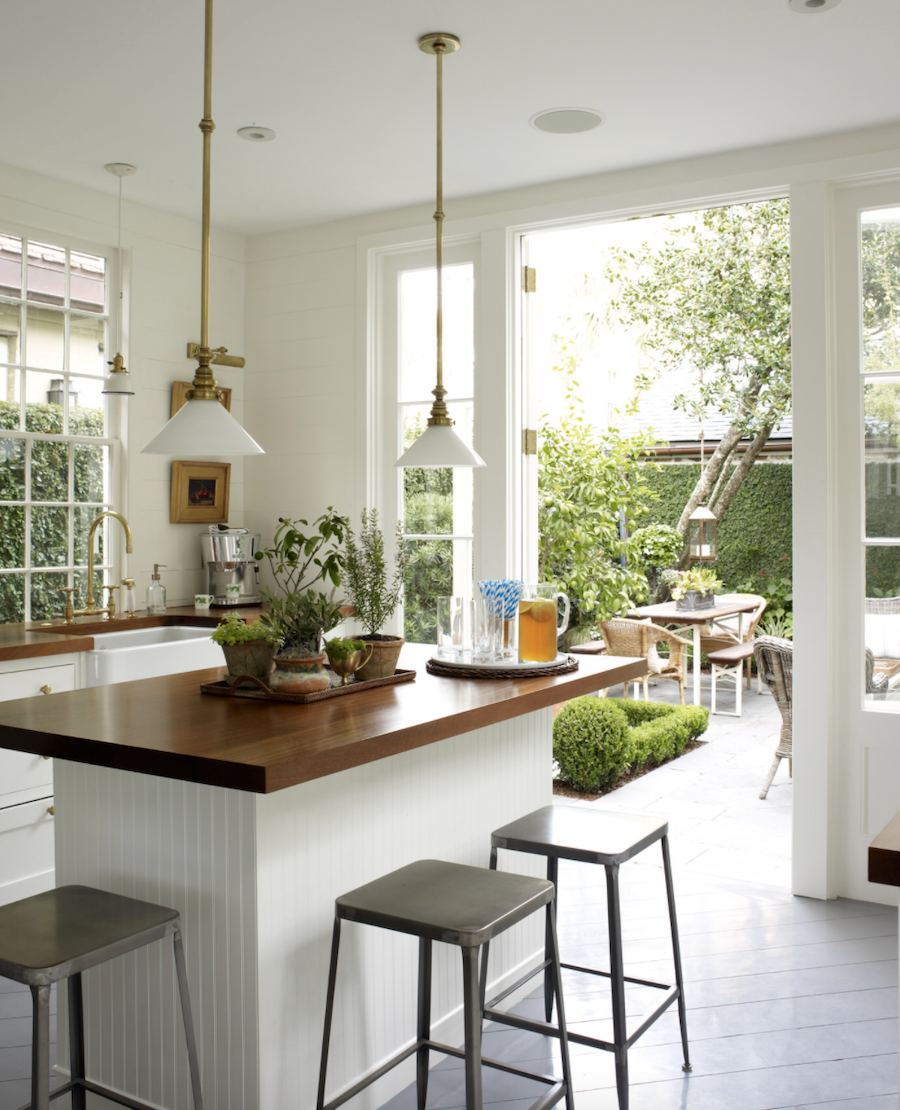
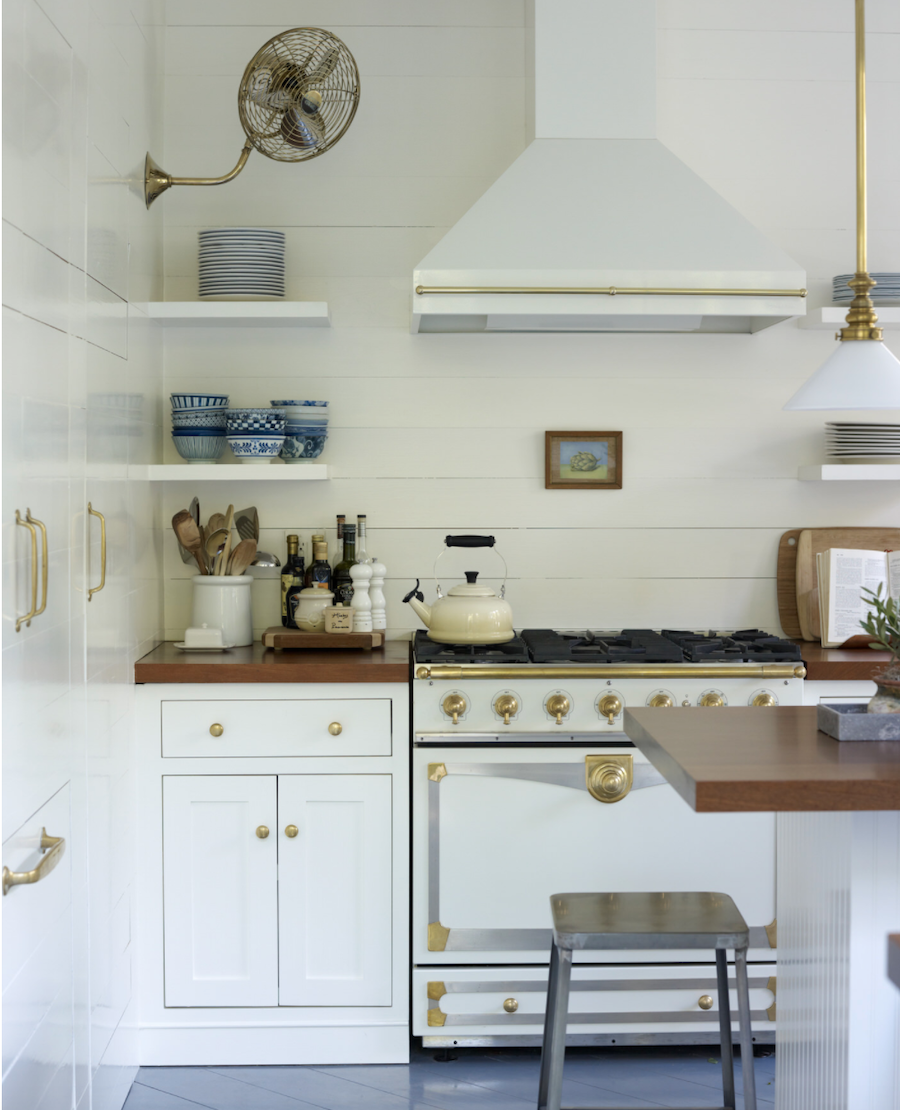
What brought you back to Charleston?
I got married, and my now ex-husband and I moved down here for his job. But there aren’t a ton of historic apartment buildings [like what I’d been working on at Goldman], so I started doing paint color consultations. Then I did my own house, it got published in Southern Living, and that was the end of that. I finished that 10 years ago, and it was published seven years ago, and I still have people talking about that kitchen.
Did you decide to launch your firm on the heels of that press?
I started by first saying, “I want to do interior design construction only.” I didn’t want to do the furniture and fabric; I just wanted to restore old buildings. But I had one client who said, “Stop it—I’ve been in your house, and I know you can do this. We trust you.” So I said, “Please be patient because I’m going to have to figure this all out while I go.” I’ve been very, very lucky to have some wonderful clients who were very trusting at the beginning. I’m on project number two with one of those clients, and on project three with another.
How did you figure out the nuts and bolts of running a design business?
Luckily, I had my mom and my aunt as sounding boards for all of this, but I never got to go do the thing where you work for somebody amazing and cool. I learned it all on the fly, and it just snowballed. Obviously I love it, but I do try to make sure when I’m planning my work calendar that there are a significant number of historic properties that I’m working with. That’s what gets me out of bed in the morning, and that’s where my passion is.
What does your business look like today?
I had an assistant, and then COVID happened and that relationship ended. Honestly, I have been meaning to hire a project manager for a year, and I’ve just been so busy that I’ve been struggling with trying to find the time to even do that. I’m stupidly busy for one person, which is so wonderful but overwhelming. I’ve been this busy in the past, but all of the supply chain issues we’re dealing with just make the job so much more stressful, and I am spending so much more time trying to manage expectations, manage the process and manage feelings. I used to be able to hang with this, but I’ve gotta get on it with hiring somebody.

What does your project load look like right now?
I have two projects in California, two projects in Connecticut, two projects in Mount Pleasant, South Carolina, and two projects in South of Broad [a historic neighborhood in Charleston]; I am also working on a restaurant and bar in Charleston.
How do you decide what you say yes to right now?
Timeline counts for a lot. I try to manage my availability, but that’s another thing that got messed up during COVID. It’s a lot of, “I thought I’d be done with this project by X date … ”
I do try and make sure that I’m maintaining some old-house work. When I have people making inquiries, and I look at my calendar and what my upcoming year is going to look like. I definitely want some stuff that’s old—I know that sounds sort of funny, but it’s my passion. In addition, you can read the room a little bit on people when you get on the phone with them a few times, and you can see whether or not you’re going to be emotionally a good fit.
How important is that emotional fit for you?
I think more often than not these become very personal relationships. I’m a little more old-school in my approach. I’m constantly jealous of my colleagues who have clients where they want the whole house done and can do the whole house in one swoop and install the house and shake hands and say goodbye. I sort of laugh when I’m having those conversations with people, because if my clients call me about a lampshade in 10 years, I won’t hesitate to do it. Back in the day, a decorator with someone would end up at a child’s christening. I love being a part of my clients’ lives, and I’m happy to continue to be a part of their lives with the repeat customers. I think you both interview each other in those early conversations and decide whether it feels right.
I love that feeling it out is such an important part of getting to the “yes” for you.
It is. Our job is very emotional. We’re creating a home—shaping the spaces where people make memories. Whether it’s doing a nursery for the first baby or designing a guest room for an aging parent, it’s just so emotional. I feel like it really does have to be a comfortable relationship that feels good for everybody.
Is there a certain emotional quality you are looking for in a prospective client?
Not necessarily—well, OK, one thing. David Netto said it so well on Instagram recently, and I just loved him for it. He was just like, “Trust your decorator.” I know that all of us—myself and my colleagues—our goal is to make you happy. We are familiar with how these things go and how the processes work, so just know we always have your best interest first.
When you have calls with somebody at the beginning and there are a lot of questions that feel like they’re not going to be able to trust you, or like they might not be able to let go, you need to recognize it. Yes, you should be in it together, but at the same time, our goal is also to be the gatekeeper to the universe of decorating your house. Just trust us, because we’ve got your back, we’re gonna do right by you, and our goal is to make the process as happy, easy and fun as we possibly can. Currently, that’s not the easiest, but I would say trust is a big one for me. Really big.
You mentioned having an old-school approach to client relationships. How similar is your business to the work you saw your mother and your aunt do?
Well, we live in a culture of accessibility and gratification, and I think my clients’ exposure to design is so much broader because of social media and the internet. That can make it difficult for us today. Decorators in my mother’s generation would be able to just present to a client and the client would go, “I love this,” or “I hate this.” Now, even if you’ve got a client that loves your design, they still end up down an Instagram or Pinterest rabbit hole, and you may get an email saying, “Oh, I saw that fabric you showed me in another room with this fabric. What if we did this as well?” It’s all, “What about this, or what about that?”
Obviously, I love to be collaborative, but the process for my mother’s generation was probably a bit different in that the client was almost forced into a trustworthy space. Now, there’s just so much out there, so I have more clients coming to me saying, “I saw this, that and the other, and I want to make sure we incorporate these things.” Unless it was a family piece, I don’t think my mother needed to incorporate as many things.
Design is just much more accessible now, and I feel like I’m constantly fighting social media. As a creator, you want to create something that feels fresh. We’re currently so inundated with so much that it almost feels at times like you’re pulling a scheme together and you’re like, “I’ve got this”—and then the next thing you know, you’re on Instagram before you go to bed and you’re like, “Oh, that person used that fabric I liked, and now it’s all over the internet, so I’ve got to switch it out.” My mother is constantly telling me that I need to chill out about that, because even for great decorators, you’re going to look through their coffee table book and see that they used the same fabric or piece of furniture 1,000 times and nobody questions them for it. We all put more pressure on ourselves than anybody else possibly can.
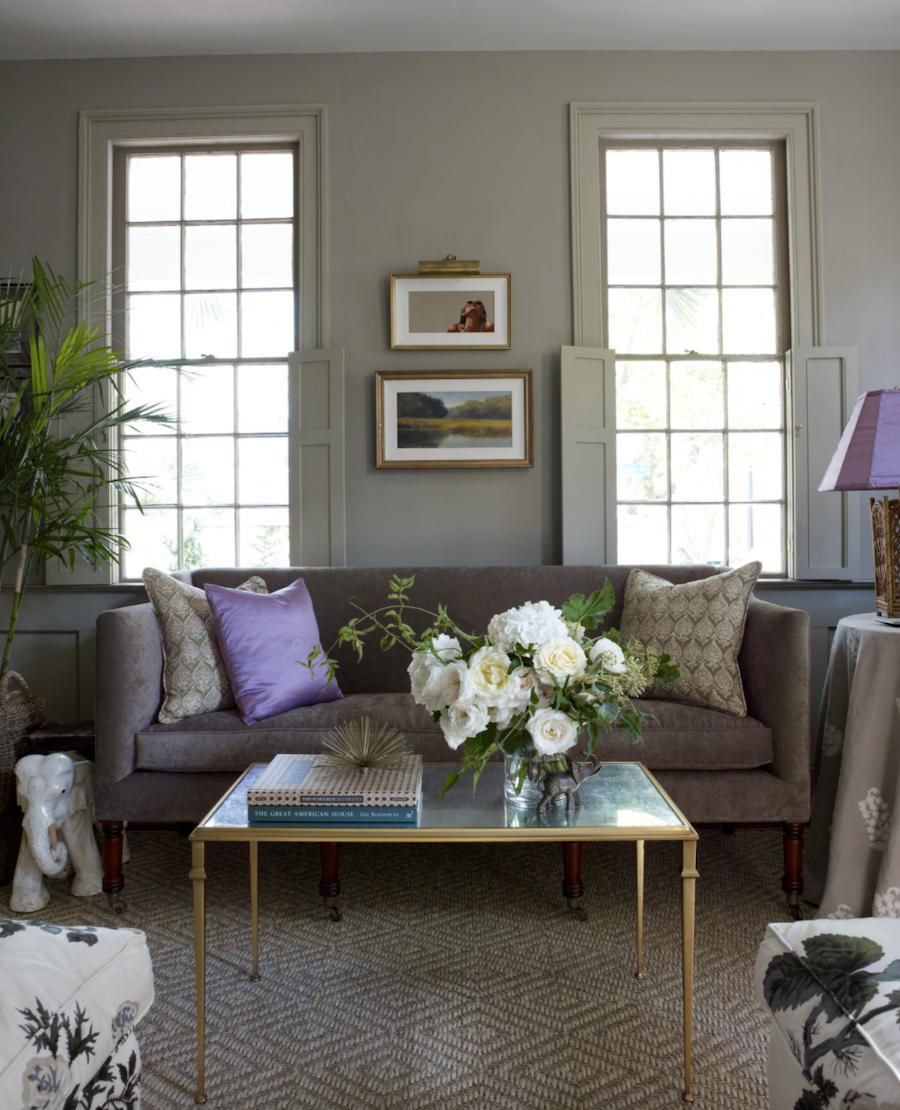
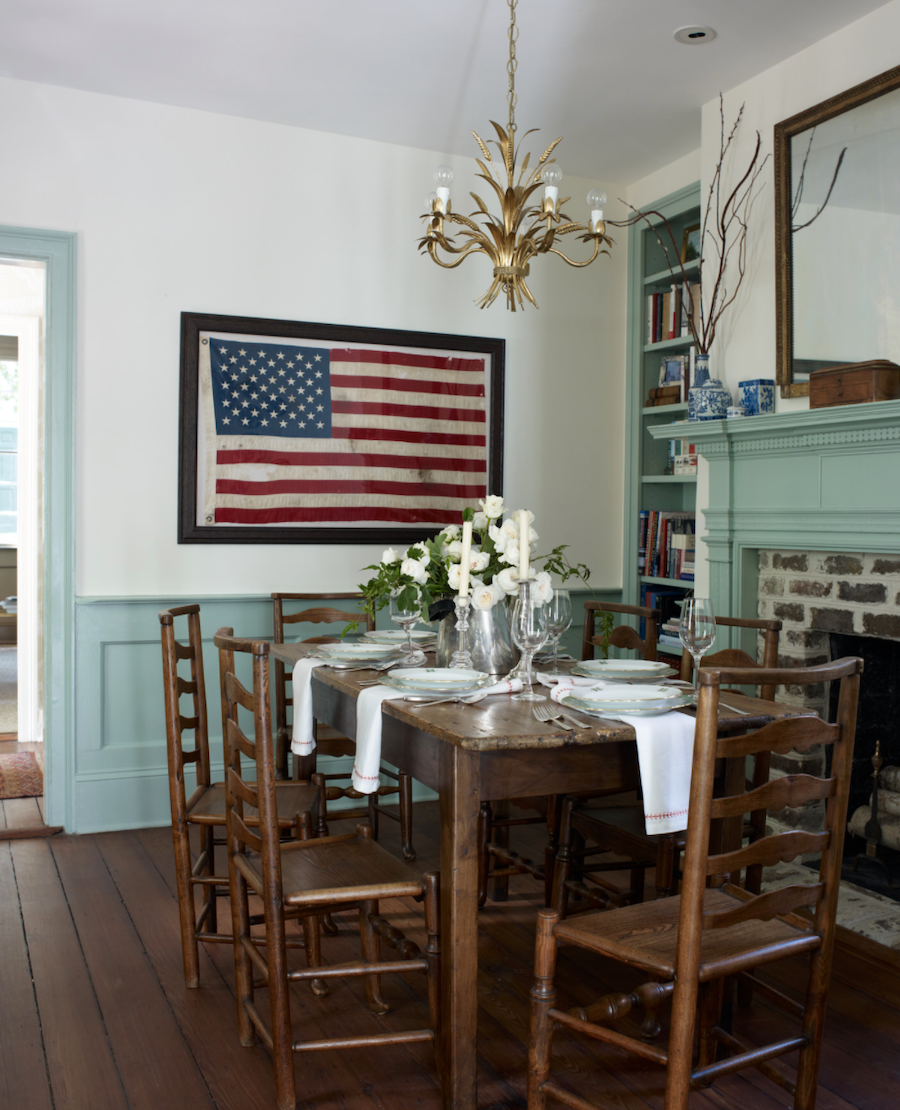
For those older homes on your project roster today, how do you approach that preservation work? And how is it different to do that work in someone’s home versus the way you were able to approach it before?
Especially in Charleston, you’re often taking an 18th- or early 19th-century house and trying to adapt it to living in the 21st-century world. It’s about asking: How do you maintain a sense of authenticity while still making it function? I’m pretty tough, I’ll be honest. In early meetings with clients, if we walk through a parlor that has beautifully preserved cypress paneling and they say, “Oh, I’m thinking about lacquering this,” I’ll be like, “Unless I can talk you out of that in this meeting ... ” That’s not me judging anybody, but it would be inauthentic to myself if I didn’t save that piece of history.
My goal is always to try and minimize the impact [of the renovation] to the original floor plan. Especially if you’re dealing with tax credits and the State Historic Preservation Office in South Carolina, which many of my clients are, they’re pretty heavy on maintaining the integrity of the floor plan in the main part of the house. There’s a nonprofit organization here called the Preservation Society of Charleston, and they have a bumper sticker that says, “Gut fish, not houses.” I believe that, I really do.
What does that look like in practice?
I just finished a project with a wonderful couple who bought a really special house here in Charleston. On the landing of the third floor, there were five doors leading to bedrooms—but we needed a master bathroom. I can’t exactly say to somebody, “Oh, sorry, you can’t have a master bathroom.” We decided to turn one of the bedrooms into a combination of bathroom and closet, but we left that doorway with hardware in the hallway. It’s blocked off from the inside because that’s where the closet is, but the fact of the matter is that we maintained the integrity of the symmetry of that landing with the four doors all facing each other, the 18th-century paneled door and the historic hardware with the rim lock.
Are clients open to that and excited about that?
Yeah, and I love a challenge. I’ll tell you this—I’ve never done a ground-up construction project, because I like to fix things. I prefer to make it work, if you will. Clients are open to it because when they come to me, they already know that that’s the way I’m going to lean. The early conversations are going to be about that, especially in a historic house. If I’m doing a construction project with somebody in a historic house, I always encourage people to spend their money on the renovation. Whether it’s redoing a terra cotta tile roof or repointing a foundation or restoring a chimney or redoing plasterwork on a mantelpiece, I always encourage people to make sure that they spend their money there. As a result, a lot of the time, the decorating phase of my project is phased—it doesn’t happen all at once, because I forced them to restore their windows instead of replacing them. It’s wonderful that I have clients that listen to me when I say that, and who understand that I’m coming from a place of complete appreciation for the building.
How do you approach billing for your work?
I bill hourly for residential projects. I ask for a retainer upfront, just to secure your place in the queue, and then your first months are billed against that money. In addition to my hourly rate, I charge net plus 30 percent [on product], though it can be less sometimes, because my contract has a clause that says [furniture costs] are not to exceed the retail [price]. If I walk into an antique store locally and I only get 20 percent off, I don’t charge my client more when they can walk in there and buy it for X.
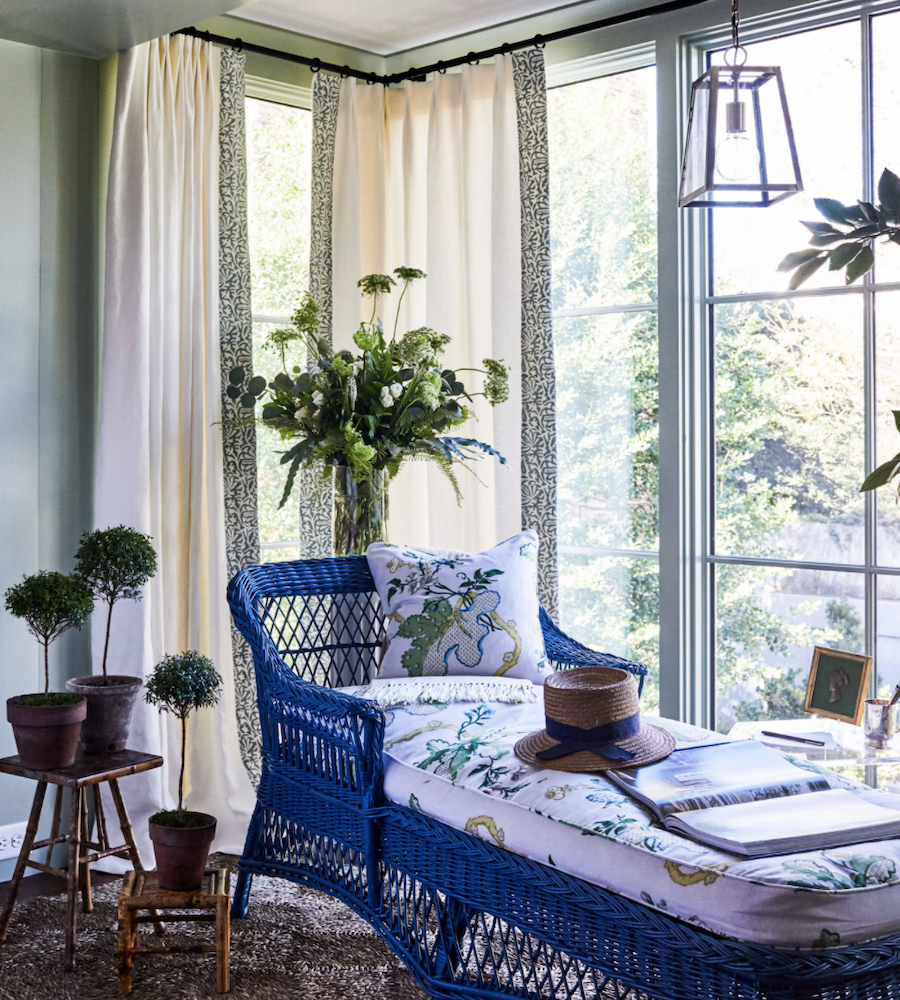
Where do you see the most opportunity to grow your business? What are you excited about when you look ahead?
I’ve always loved the idea of doing lines and collaborations with companies on products. For me, that’s definitely something that I’d like to do, but more in the construction space with hardware. Also, having more people. I don’t know that I ever need to be more than three other people, but being able to have a support staff would be great.
And at the end of the day, preservation is the thing that got me. I love any opportunity I get to talk about and educate people about preservation, and to help people understand how to go about something sensitively and without emulsifying history. I love creating a story in a historic house where you’re trying to add your own piece to the patchwork quilt of a building’s history—when you’re dealing with a house that’s 300 years old, and you can see remnants of the campaign that happened in the 19th century when they switched out the 12-over-12 windows for 6-over-6, and of the movement in the 1930s when they decided to go uber colonial revival. Now that we’re in 2021, buildings are considered “historic” after 50 years—so we’re living in a time where we’re talking about 1971, and it’s important to take that into consideration and make sure people understand that midcentury architecture is historic. Any opportunity to push a preservation agenda and talk about history and historic buildings—one of my goals is figuring out how to do that regularly, I guess.
Can you tell me a little bit about the design scene in Charleston?
I think one of our biggest complaints is that we really do have this raging design scene. If Condé Nast tells us we’re the number-one city in the country one more time, we’re all going to flip out. Charleston is just such a hot place right now. It’s a big design scene, and we’ve got some seriously talented folks here. We’ve also got designers from other places who are coming with clients buying second homes. They’re coming in and doing work here, and some have ended up moving here and opening another office. You’re seeing a lot of stuff get published from our area, which is really great. And one of the most wonderful things about it, though, is that it’s a pretty broad spectrum—I don’t feel any competition or ill will or anything like that. It’s really great to live in a community where you can get together, become friends with someone doing the same job as you and be able to dish over cocktails about how to deal.
Do you feel like the aesthetic is changing or broadening?
Broadening. There is still very much a market for an antique-driven interior, but we’re now getting a little more modern, funky mix. We have a whole scene of decorators doing more of a coastal vibe, as well.
Are your clients a mix of primary and secondary residences? Where do you tend to have work?
It was more of a combo a few years ago, and now it’s more primary residences for people who have just moved—I have clients coming from New York, Maine and California. It used to be more of a second-home location, but now I’m getting more people who have now decided to relocate.
What is the biggest thing you know now that you wish you had known when you started your firm?
I am definitely jealous of my colleagues and friends who had the opportunity to learn from someone else. I fell into this, and anytime I’ve made a mistake, I don’t forget it—because I paid for it. It would have been nice to watch a master work, if you will. So going back, if I had known this is where I was going to be, that probably would have been what I would have liked to have done.
I would also say being better at setting boundaries. A lot of my clients are repeat customers, and none of them were friends to begin with, but they all become friends and that line gets blurred. Sometimes you’ve just got to call it and say, “I need a minute”—I need my Saturday, or I need my 10 o’clock at night—but that’s hard to do with a friend. My goal is always to make my client happy, and if they feel like I’m not being responsive, that can be difficult.
I think boundaries are tough in our business. I think in COVID, it’s gotten weirder, too, because people were working from home and the lines were blurred even more. Going back to the universe we live in now—it’s about accessibility all the time, which makes it tough for people in my line of work to make sure that they give themselves the time and the headspace that they need. At the end of the day, we do have to be creative, and that requires a little bit of mental rest.
To learn more about Olivia T.M. Brock, visit her website or find her on Instagram.





























